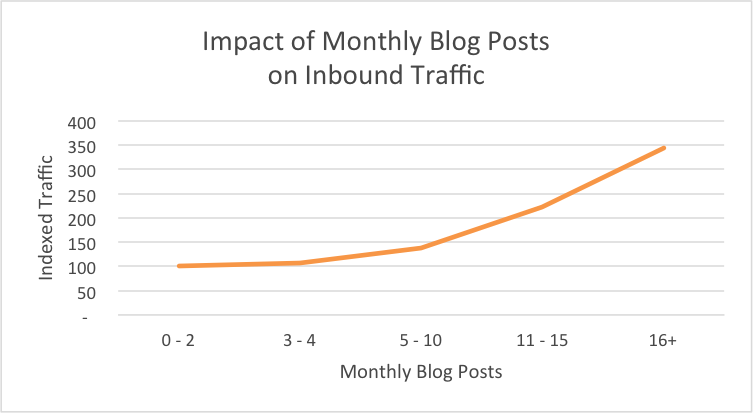15 Facebook Ad Copies For Your Next Ad Campaign! (Every Industry Could Take Some Inspiration)
As of October 2019 Survey by Hootsuite, Facebook’s potential advertising reach globally is 1.93 billion. 32% represent people over the age of 13.

Image Credit: Hootsuite
Statistics also reveal that the average user clicks 12 ads in 30 days, which shows people interaction with Facebook ads.

Image Credit: Hootsuite
Facebook ads are piquing user’s interest. You will not only see visually appealing ads but also close to your interest. You will see ads of the brands or products which you might be thinking to buy or most interested in. This makes them compelling and engaging.
There is a lot of competition and only THE BEST Facebook ad examples get the 12 coveted clicks. In today’s article, we will take a look at some best Facebook ads I could find and list and examine what makes them effective. You can use them as a guide to comprehend what types of creative, copy and offers work the best to model the success of these campaigns and help to expand your customer base and generate desired returns.
15 Winning Facebook Ad examples
1. Allbirds

Image Credit: Disruptive Advertising
- The animated character on the static shoe image grabs your attention.
- The testimonial in the form of a quote builds trust as people believe more in real testimonials or reviews than ad copies.
- It is eligible for returns if the gift isn’t comfortable or fit well.
2. Coschedule

Image Credit: Social Media Examiner
- The colorful design of the ad captures the attention right from the start.
- Provides facts and data in the intro of the ad which establishes trust, targets the specific audience and provides the benefits of the product.
- The ad begins with a question, “ Ready to get organized?”- implies that they are promising a benefit to their target audience which might interest them to know more about your offer. The image of the editorial calendar explains how the product helps to achieve the promised benefits.
3. Best Buy

Image Credit -Digital Marketer
- The best part of the ad is that it tells how you can use the product and not what product offers you.
- The video is attractive and compelling showing the unique quality of the product as well.
4. James Allen Jewelry

Image Credit: Disruptive Advertising
- An emotional and heart touching ad, connecting to the audience instantly.
- This video shows a man proposing to his girlfriend and imagining her showing off her ring to whoever she meets for the rest of her life.
- The joy and relief of having the ring on her hand outweigh the joy of saying yes.
- Well, in reality too an engagement ring is a very special piece of jewelry for a woman and this ad captures the emotion and moment very well.
5. FreshBooks

Image Credit: KlientBoost
- Straight and simple ad but with a powerful message. The start of the ad says ” FreshBooks makes online accounting easy so you can stay focused on running your business.” which defines their target audience clearly – people who spend more time on accounting than their business ie. small business owners.
- Well defined target audience, strong content, bright colors and relatable design are the USP of the ad. Research states people make up their minds within 90 seconds of their initial interactions with products or people.
6. Shopify

Image Credit: Karola Karlson
- Shopify announces new product Shopify pay in this ad for its new and existing prospects.
- The image shows the product and the headline explains the benefit of the product – accelerated payment option.
7. Purple Carrot

Image Credit: Disruptive Advertising
- Purple Carrot is a boxed meal-kit and with the holiday season approaching they are making a broad emotional appeal which is effective in this case.
- The carousel ads of multiple meals help in conversions as it shows the various options provided by Purple Carrot. For example, if someone doesn’t like any dish, there are other options for them. Carousel ads help in building potential customers.
8. Ocean Basket Mediterrasian
- Facebook Canvas Ads recently renamed as Instant Experiences is used in this example extensively. It offers a unique visual experience to the audience.
- The upbeat music to each slide, engaging and high-quality video, and intriguing content to explain what the brand has to offer. As you keep progressing in the video, you can see more information on the final product and just in time you see a CTA in the end.
- The ad includes carousel advertising and a full spectrum of social media interface. The idea of the ad is to give the audience a glimpse of Ocean’s Basket Sushi as a feast of flavors and enticing the heart and mouth with the delicacies.
9. The New York Times

Image Credit: Hubspot
- This ad by the New York Times is a classic example of photo ads. The ad with an intriguing illustration depicts the audience – millennials. The drawing is visually compelling and non-traditional that immediately draws attention.
- If the main product to advertise is a reading article then the publisher needs to be creative with images and they should complement the written content.
- The goal of the ad is increasing the page’s likes and the call-to-action compels to read more about the article.
10. Boston Sports Club

Image Credit: Hubspot
- Bustle boosted a post that promotes one of its articles on Facebook. It is already posted organically on the page and paying to boost it can highly benefit the content that has mass appeal.
- Bustle’s boosted ad attracts many Bustle and Amazon followers. We are familiar with the Amazon Prime logo and color, but it’s a neon sign in the image and a high number of examples pique viewers’ interest.
- It is a brilliant ad that creates curiosity in the minds of the audience and compels them to click and learn more about the article.
11. Bustle

Image Credit: Hubspot
- Bustle boosted a post that promotes one of its articles on Facebook. It is already posted organically on the page and paying to boost it can highly benefit the content that has mass appeal.
- Bustle’s boosted ad attracts many Bustle and Amazon followers. We are familiar with the Amazon Prime logo and color, but it’s a neon sign in the image and a high number of examples pique viewers’ interest.
- It is a brilliant ad that creates curiosity in the minds of the audience and compels them to click and learn more about the article.
12. GlobeIn

Image Credit: Design Pickle
- GlobeIn handmade crafts sourced from different regions and delivered at the doorstep. The highlighting point of the ad is the message on how the product will benefit consumers and the community.
- People support and invest in socially conscious businesses that contribute to the betterment of society. The ad capitalizes on the idea that when a customer purchases the product, it supports fair trade, ethical wages, and hardworking, labor class people.
- The ad shows the unique work of artisans and makes an emotional appeal that helps to engage the audience.
13. Hygge Bands

Image Credit: ROI Overload
- This slideshow ad show multiple images of people wearing different Hygge bands on their runs. Slideshow ads can be a substitute for video ads if you are short on budget.
- The ad makes good use of emoji and shows the product in use making it relevant and relatable to the audience.
- The ad has a good deal to offer ‘Buy 1, Get 3 free’ which is tempting and encourages buying behavior.
- Another highlighting factor is the lifetime warranty, PayPal payment, and quick shipping. This gives potential customers the confidence to try the product if they are not aware of the brand.
14. Grammarly
https://www.facebook.com/grammarly/videos/295947004582379/?t=0
- Simple, Subtle, heart-touching and engaging- these adjectives define the ad. Grammarly has used a fascinating story of a user and elegantly woven into the product. The story complements the product naturally.
- The goal of Grammarly is branding and they have used a storytelling approach that has reached around 5 million people.
- Always end your ad with a CTA and here it is “Write the future”. The engagement rate of this ad was very good and as reported by AdEspress, the video-view rate increased by 33% and cost-wise they landed $0.02 video-views and a CPC of $1.87.
15. Project Repat

Image Credit: Sprout Social
- It is not necessary to have a massive budget for your ad creative. Project Repat goal is the find interested buyers who are unaware of personalized T-shirt quilts.
- Initially, for the holiday campaign, they used lead ads to target specific groups and built a 1% lookalike audience based on emails collected from the response from lead ads. Later, they tried different formats and styles but what clicked is the ad creative featuring user-generated content that entices viewer attention and converts.
- They retargeted the ad across social media platforms to a Custom audience from the website and another Custom audience who had engaged with its ads by viewing, clicking or liking them.
- The result was phenomenal with 3.2x quilts sold during the holiday season.
The Essentials of a Great Facebook Ad
Although the essence behind each ad is different, the elements more or less the same. Some of the key elements are:
- Headline: Title of the Ad
- Text: It appears directly above or below the image and a viewer notices the first thing. Keep it short and concise.
- Description: Only if needed, you should use more text in your ad to describe the product in depth.
- Media: Image or Video used in an ad which engages more audience.
- Call-to-action: An excellent way to ensure the audience takes action after viewing the ad.
- Ready for Your Next Facebook Ad Campaign?
With various Facebook Ads examples, I hope it sheds some light and helps you determine your strategy to create an engaging Facebook campaign and connect with your audience. Hopefully, these ads gave you an idea or inspiration that you can implement in your next Ad campaign because when it comes to creativity sky is the limit.
Digital Advertising Industry Plans To Replace Cookies With First-Party Data
As the third-party cookies crumble and in the wake of privacy regulation coming into effect, the online advertising industry is facing an identity crisis. They are in search of a new identity and one possible solution is people’s email addresses and phone numbers.
At the Interactive Advertising Bureau’s Annual Leadership Meeting in Palm Springs, California, on 10th February, the IAB wants to partner across brands, agencies, publishers and tech companies to develop new means to power digital advertising.
“Project ReArc”, a chosen name for re-architecture, a critical part of their multi-phase plans to build a replacement for the third-party cookies presently blocked by Safari and Firefox browsers and Google Chrome to follow soon.
IAB Tech labs proposed to build a new identity based on e-mail addresses or phone numbers, which provide a constant and rational way of recognizing someone than the third-party cookie did, without giving up on user’s privacy.
The IAB and all the involved entities are supporting the future of online advertising based on email advertising and phone numbers. They have witnessed Facebook and Google dominate the online ad world thanks to their platforms logged-in user bases and see e-mail addresses and phone number identifiers as a way for the open web to rival the walled gardens.
However, Megan Pagliuca, Chief Media and Data Officer at Hearts & Science says the people with signed-in users are going to win. If grounding the identifier on first-party data will create a disadvantage for long-tail and mid-tier publishers as they don’t have a sizeable number of registers. It is also unlikely to benefit the open web as a whole.
To protect the advertising business, if publishers are pressured to compel users to provide their email address or phone numbers, it is highly possible that many sites will put content open after registration so that only logged-in users can access it. While this can be a precarious situation for publishers to gain user registries, it could also lead them to lose a part of their audience. As a result, there is a potential negative impact on the small and mid-sized publishers leading to an unanticipated consequence.
A publishing executive asked earnestly, “Do ad networks have a chance of returning?”
Ad networks started for small publishers like individual bloggers and act as mediators between publishers and advertisers to curate ad inventory from publishers and sell to advertisers. Eventually, supply-side platforms came up and replaced ad networks with third-party cookies on these sites to auction off their inventory to sell targeted ads. However, without third-party cookies, these small publishers will face difficulties to collect email addresses or phone numbers and once again will have to be under the umbrella of the ad network.
The primary reason for ad networks struggles to attract advertisers is generally they are not transparent about where an advertisers’ ad appeared. However, this is not true in the case of brand advertisers who care about the context in which their ads appear while performance advertisers care whether the ad drove sales or any conversion event.
I could see a world where performance buyers return to using ad networks because they don’t care about transparency,” said the unnamed SSP executive to Digiday.
The return of the ad network is a concern for publishers because of the possibility for ad networks to siphon some of their revenue. While some ad buyers direct their money to big publishers as they have signed-in users, others may see ad networks offering a lower price and move their money in that direction to become cost-effective.
Do You Really Need To Blog To Get Rank #1 On Search Engines?

Image Credit: Pixabay
Many business owners quiver at the idea of blogging. “Do we really need to have a blog?” is the most obvious question. The answer is “YES”. It is the most efficient way to boost your SEO rankings. In this article, I aim to explain to you in detail the importance of blogging for SEO and how it makes your site favorable for Google to rank and increase your organic traffic.
You may have a million reasons to blog, some of them include building trust among the followers, positioning yourself as an experienced expert, and sharing news or know-how with your company’s followers.
Six Reasons Blogging is important for SEO
1. Provides fresh content:
Google tends to favor websites with a lot of ‘high-quality content’. You don’t change the pages on your websites often, hence writing a blog comes in the picture. Google loves fresh content whether you update your blog every day or every week. The highlighting point is the quality of the content which is the most important factor. Quantity of articles with low quality will not help or contribute to rankings. Focus on creating high-quality articles regularly and ensure you are optimizing each article for different keywords. Avoid writing articles with the same keyword as it competes with each other and limits your keyword ranking opportunities. Google doesn’t deliver outdated information to the searchers but regularly updated and fresh content sends signals to them that the site is working. It also gives search engine algorithms reasons to index your website more often. A Hubspot study reveals more often a company writes articles, more organic search traffic it receives.

Image Credit: eWebscapes
2. Helps to implement long-tail keywords:
Keywords don’t hold the same weightage that they once did. Many people start SEO wanting to aim for the most relevant keywords for their business. For example, if you are selling ‘camping gadgets’ and show up on page one for the search ‘camping gadgets’.Unless you are the biggest brand for camping gadgets, you will find it difficult landing a top spot for the search. SEO is competitive and the best bet for the brands is to look for longer, specific keywords related to the business and try to rank those. These are called long-tail keywords. Blog posts on the website are an excellent way to use long-tail keywords.
For instance, a local store might be trying to rank the keyword ‘camping gadgets’ but also aiming to rank long-tail keyword ‘Gadgets for car camping’. This gives them a chance to write a blog post on ‘ Types of gadgets needed for car camping’ and link it to their product using the long-tail keywords. Long-tail keywords are extremely important for SEO strategy and studies suggest that 50 per cent of the searches are four words or longer. From the above example, we understand creating blog articles allows the site to rank many keywords. The traffic opportunity is more from these topics than on page three or four for using more popular terms.
3. Google is a ‘Topical Match Engine’
Google is no longer looking for a large number of pages but for sites who are a book of knowledge on their topics. They have changed their algorithms and now understand the context of the whole topic, being a topical match engine versus a simple keyword match engine. This shows that having a single page or article with a single keyword around the topic is not sufficient for your site. You need to represent the topic more comprehensively to appear in Google search results.
Blogging provides an outstanding opportunity to demonstrate your thoughts and in-depth knowledge about a topic to your readers. Writing multiple articles covering different aspects of a subject and giving detailed insights about that topic shows Google that your site is worthy to come up in the search results for that topic. This gives a boost to the rankings of competitive content on your site.
4. Opportunities for backlinks:
A link for a link. A prominent way to get those links and increase the authority of your domain is by blogging. Look out for relevant blogs to link to your blog posts and they may provide a link to your website on theirs. These links have a direct effect on your rankings and help generate traffic to your website as well as other company’s site.
However, it is important to note that the process of gaining inbound links should be done naturally. If the website linked to your blogs or site has no relevance with your industry then it will violate Google’s terms of services and can lead to a high penalty situation.
Therefore, produce high-quality content often to earn inbound links organically and build a strong following on social media to share articles each time. Blogging increase chances to earn inbound links from other websites that is highly impactful for SEO.
Research shows that companies who blog get 97 per cent more links to their websites.
5. Increases interlinks:
SEO is so much about links and internal links and easiest to get as you create them for yourself. So, including internal link points users from one page of the site to another. As you add more pages to various but related topics, you can naturally link them to each other.
Every time you use anchor text to tell Google what page you are linking while building up its connection to your target keyword in how the algorithm sees it.
6. Shareable Posts:
When your target audience likes the blog post, they share it on social media. The more social media shares it gets, the more people will click, like and reshare, and explore other pages on your website. When you get a lot of traffic and get repeat visitors that tell Google – people like your website and raise your rankings and authority level in their algorithm.
Wrapping up
Blogging and SEO go hand-in-hand. Blogging consistently helps increase counts of keywords and pages, inbound links, and create comprehensive articles. Target audience loves to hear from you and Google loves your updated and relevant website. Search engines look for blogs that explain the premise of the subject that interest bloggers and you can take advantage of it to up your rankings. So get cranking on the blog posts




